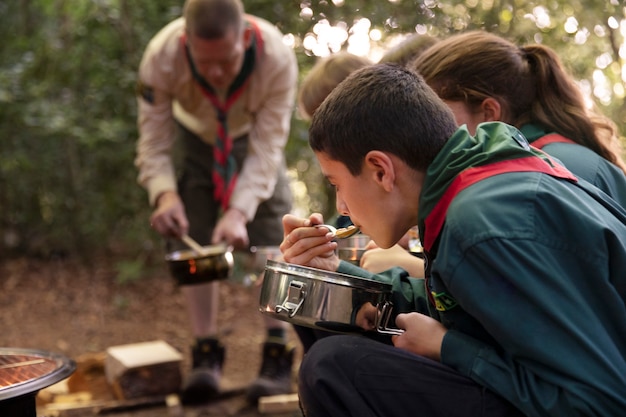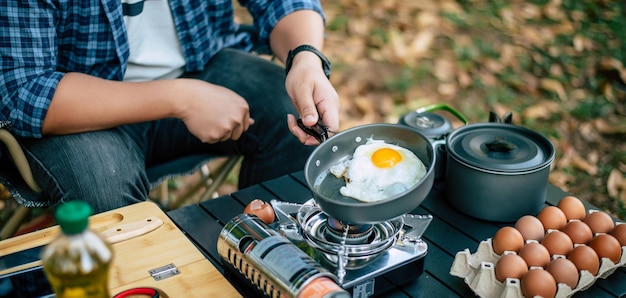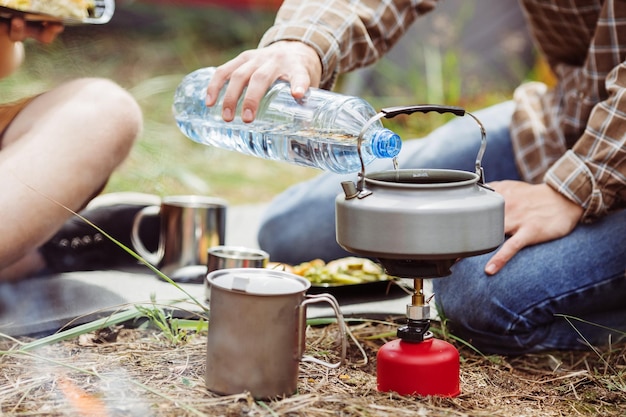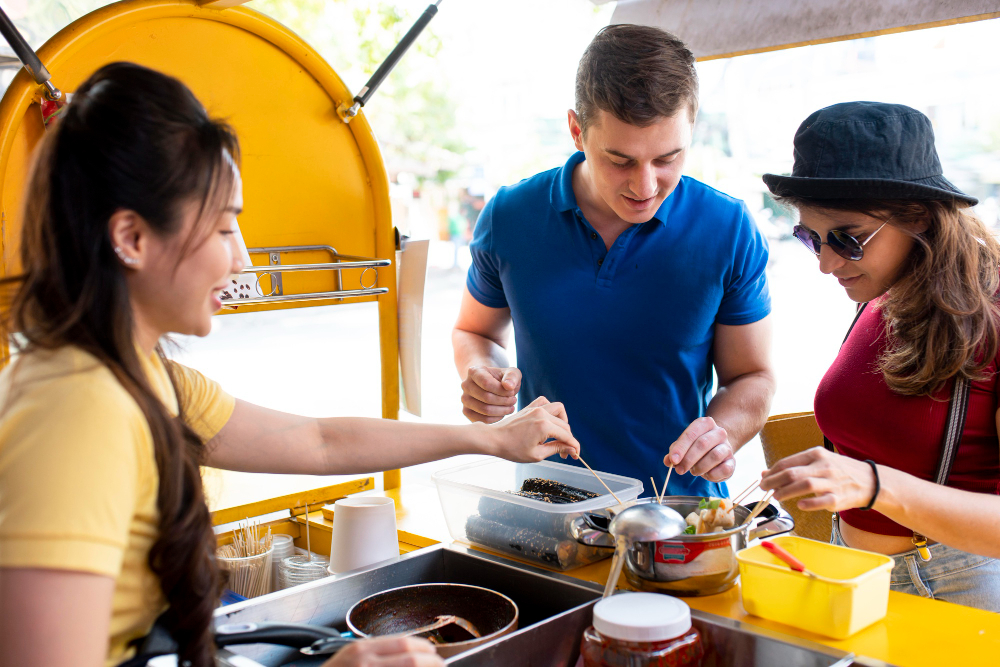The Significance of a Well-Equipped Camp Kitchen
Before we jump into the nitty-gritty of building your DIY camp kitchen, let’s discuss why having one is essential. Imagine you’re in the middle of a remote camping trip, surrounded by the beauty of nature, and you’re craving a hot, delicious meal. A well-equipped camp kitchen can make all the difference.
Convenience in the Wild
When you’re camping, convenience is key. A DIY camp kitchen allows you to have all your cooking essentials in one place, making meal preparation a breeze. No more rummaging through bags and boxes to find your cooking utensils or spices.
Cost-Effective Solution
Building your camp kitchen can save you money in the long run. Instead of investing in expensive pre-made camping kitchens, you can repurpose items or buy affordable materials to create a functional setup that suits your needs.
Customization and Personalization
One of the most significant advantages of a DIY camp kitchen is the ability to customize it to your liking. You can tailor it to fit your camping style, cooking preferences, and the number of people you usually camp with.
Planning Your DIY Camp Kitchen
Now that we understand the importance of a well-equipped camp kitchen, let’s discuss how to plan and design one that caters to your specific needs.
Location Matters
Before you start gathering materials and tools, think about the type of camping you most often engage in. Are you a car camper who parks near your campsite, or do you prefer backcountry camping, where every ounce of weight matters? Your camp kitchen’s design will depend on these factors.
Basic Components
Every camp kitchen, whether DIY or store-bought, consists of a few fundamental components:
1. Cooking Surface
This is where the magic happens. Depending on your preferences, you can opt for a portable camping stove, a small charcoal grill, or even a campfire setup.
2. Storage
Consider how much storage space you need for cookware, utensils, and food supplies. Shelves, drawers, or hanging organizers can be integrated into your camp kitchen.
3. Preparation Area
You’ll need a stable surface for chopping, slicing, and preparing ingredients. A foldable table or countertop can serve this purpose.
4. Cleanup Station
Don’t forget a designated area for washing dishes and utensils. A basin, dish rack, and biodegradable soap are essential here.
Materials and Tools
Once you’ve outlined your camp kitchen’s basic components, it’s time to gather the necessary materials and tools. Here’s a list of common items you might need:
– Wood or Aluminum Frame
You’ll need a sturdy frame to build your camp kitchen on. Wood is a classic choice, while aluminum is lightweight and rust-resistant.
– Plywood or Aluminum Sheets
These materials can be used to create surfaces for your cooking area, storage, and preparation space.
– Hinges and Latches
To make your camp kitchen foldable and portable, you’ll need hinges and latches to connect the various components.
– Screws, Nails, and Tools
Ensure you have the appropriate screws, nails, and tools to assemble your camp kitchen securely.
Building Your DIY Camp Kitchen
With a clear plan and the necessary materials in hand, it’s time to roll up your sleeves and start building your DIY camp kitchen.
Step 1: Frame Assembly
Begin by constructing the frame of your camp kitchen. This is the foundation that will support all the other components. If you’re using wood, cut and assemble the pieces according to your design. For aluminum frames, ensure that the pieces fit together securely.
Step 2: Surface Installation
Attach the plywood or aluminum sheets to your frame to create the cooking surface, storage shelves, and preparation area. Make sure everything is level and secure.
Step 3: Folding Mechanism
If you want your camp kitchen to be portable, add hinges and latches to enable easy folding and unfolding. This step ensures that your DIY camp kitchen can be set up and packed away with minimal effort.
Step 4: Accessories and Finishing Touches
Customize your camp kitchen by adding hooks, utensil holders, and other accessories to keep your cooking supplies organized. You can also paint or stain the wood for added durability and aesthetics.
Using Your DIY Camp Kitchen
Now that your DIY camp kitchen is ready, let’s talk about how to make the most of it during your camping adventures.
Meal Planning
Before you head out, plan your meals and gather all the necessary ingredients and cookware. Having everything organized will make your outdoor cooking experience smoother.
Cooking Safety
Follow safety guidelines when using your camp kitchen, especially when dealing with open flames or portable stoves. Keep a fire extinguisher and first-aid kit nearby, just in case.
Cleaning and Maintenance
After each use, clean your camp kitchen thoroughly to prevent food odors and residue. Proper maintenance will ensure your DIY camp kitchen lasts for many camping trips to come.
Conclusion
In conclusion, a DIY camp kitchen is a game-changer for outdoor enthusiasts who love camping and cooking in the wild. It provides convenience, customization, and cost-effectiveness, making your camping experience more enjoyable. With proper planning and the right materials, you can create a camp kitchen that suits your needs and elevates your outdoor cooking adventures. So, roll up your sleeves, gather your tools, and embark on the journey of building your very own DIY camp kitchen. Happy camping and bon appétit!
